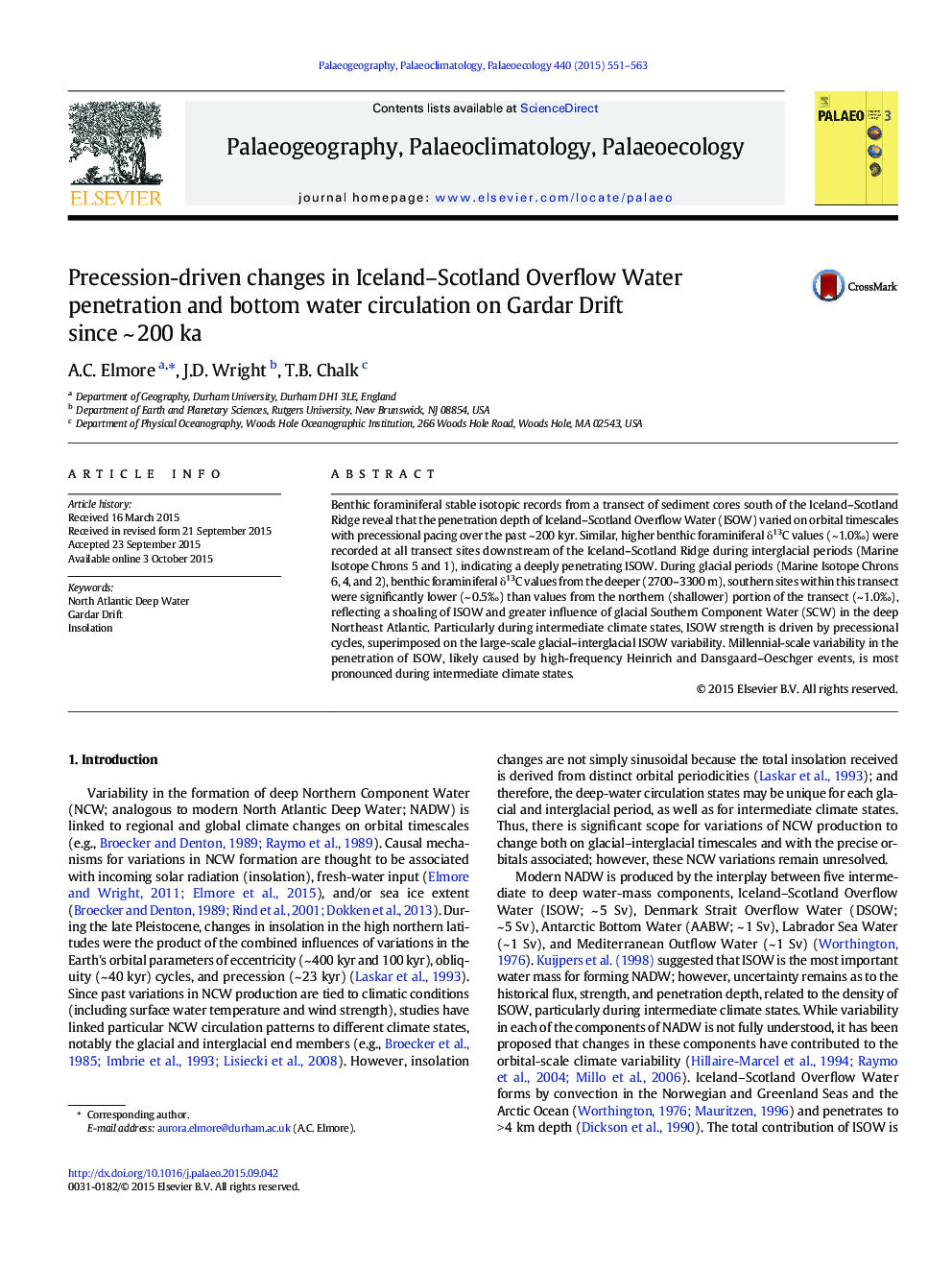| Article ID | Journal | Published Year | Pages | File Type |
|---|---|---|---|---|
| 6349554 | Palaeogeography, Palaeoclimatology, Palaeoecology | 2015 | 13 Pages |
Abstract
Benthic foraminiferal stable isotopic records from a transect of sediment cores south of the Iceland-Scotland Ridge reveal that the penetration depth of Iceland-Scotland Overflow Water (ISOW) varied on orbital timescales with precessional pacing over the past ~ 200 kyr. Similar, higher benthic foraminiferal δ13C values (~ 1.0â°) were recorded at all transect sites downstream of the Iceland-Scotland Ridge during interglacial periods (Marine Isotope Chrons 5 and 1), indicating a deeply penetrating ISOW. During glacial periods (Marine Isotope Chrons 6, 4, and 2), benthic foraminiferal δ13C values from the deeper (2700-3300 m), southern sites within this transect were significantly lower (~ 0.5â°) than values from the northern (shallower) portion of the transect (~ 1.0â°), reflecting a shoaling of ISOW and greater influence of glacial Southern Component Water (SCW) in the deep Northeast Atlantic. Particularly during intermediate climate states, ISOW strength is driven by precessional cycles, superimposed on the large-scale glacial-interglacial ISOW variability. Millennial-scale variability in the penetration of ISOW, likely caused by high-frequency Heinrich and Dansgaard-Oeschger events, is most pronounced during intermediate climate states.
Keywords
Related Topics
Physical Sciences and Engineering
Earth and Planetary Sciences
Earth-Surface Processes
Authors
A.C. Elmore, J.D. Wright, T.B. Chalk,
